-
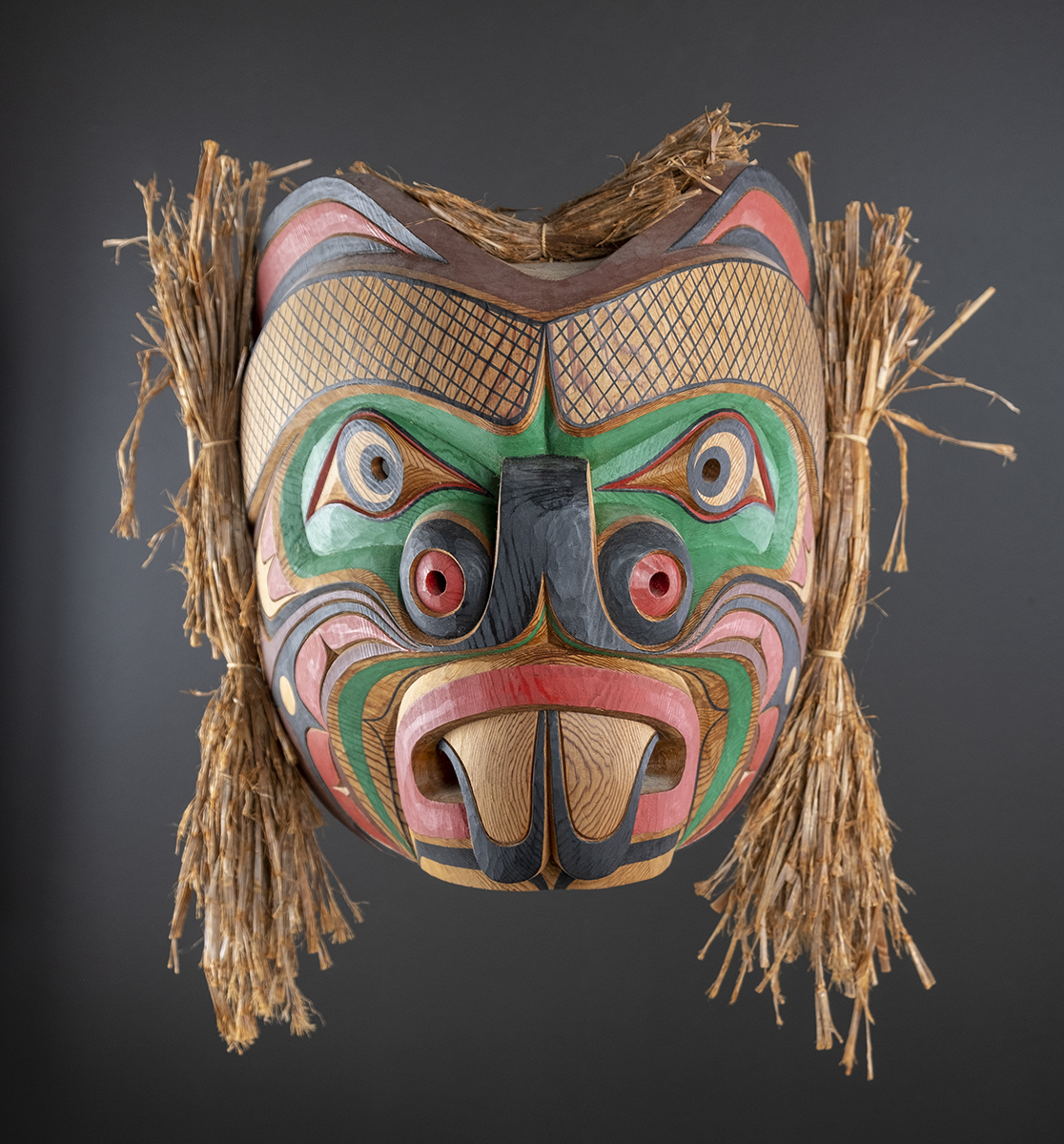 Beaver Mask (1996)Red Cedar, Cedar Bark, Acrylic Paint
Beaver Mask (1996)Red Cedar, Cedar Bark, Acrylic Paint- 17"h
- 14"w
- 7.5"d
SOLD -
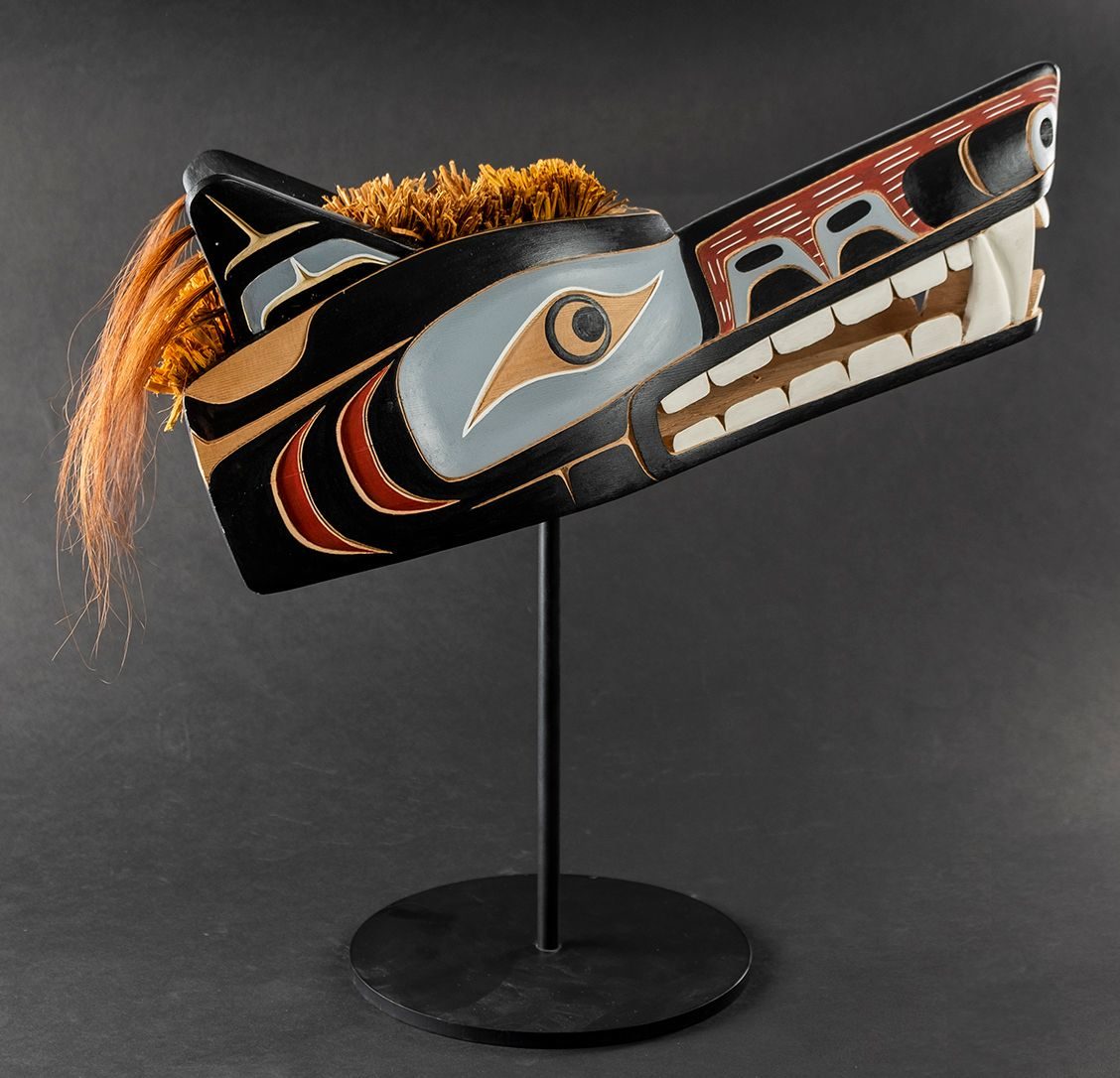 Nuu-chah-nulth Wolf Mask “Kwyatcik”Western Red Cedar, Acrylic, Cedar Bark, Horsehair, Cedar Bark (Not Sold with Stand Pictured)
Nuu-chah-nulth Wolf Mask “Kwyatcik”Western Red Cedar, Acrylic, Cedar Bark, Horsehair, Cedar Bark (Not Sold with Stand Pictured)- 8.5"h
- 21"w
- 8"d
SOLD -
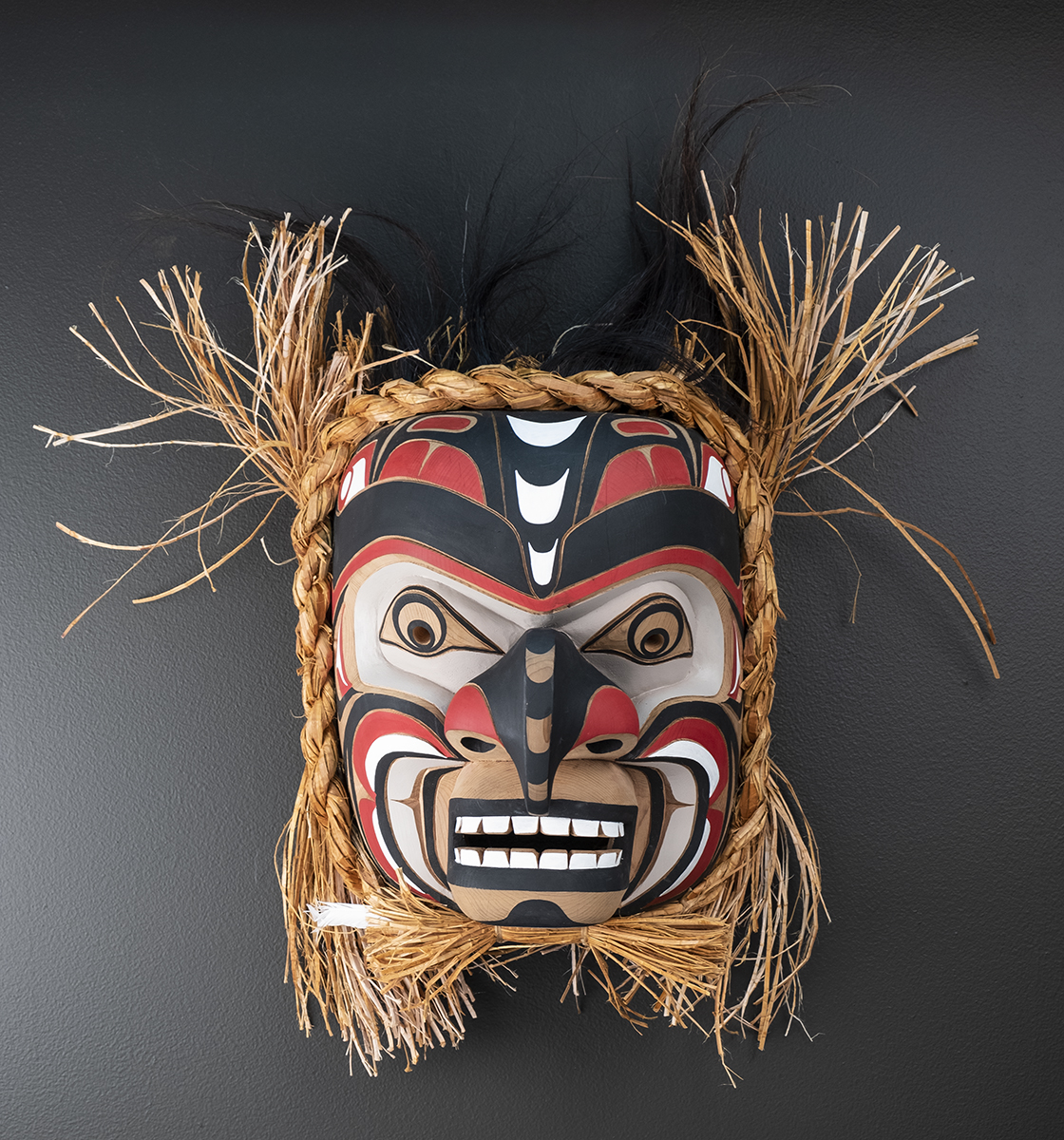 Hawk-Man MaskWestern Red Cedar, Cedar Bark, Acrylic, Feathers, Horsehair
Hawk-Man MaskWestern Red Cedar, Cedar Bark, Acrylic, Feathers, Horsehair- 27"h
- 19"w
- 10"d
SOLD -
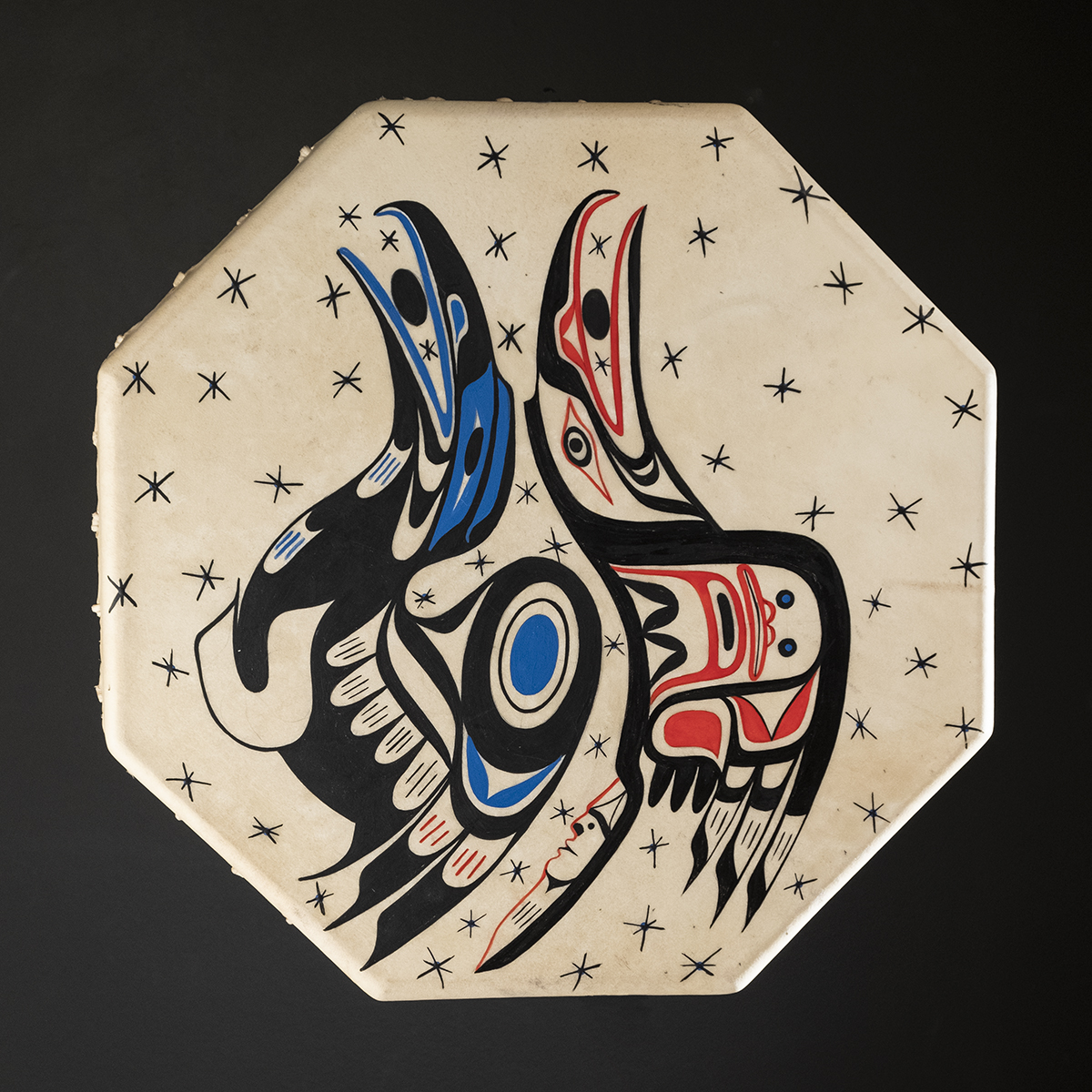 Two Ravens DrumPainted Hide, Wood Frame, Beater
Two Ravens DrumPainted Hide, Wood Frame, Beater- 14.75"h
- 14.75"w
- 2.75"d
SOLD -
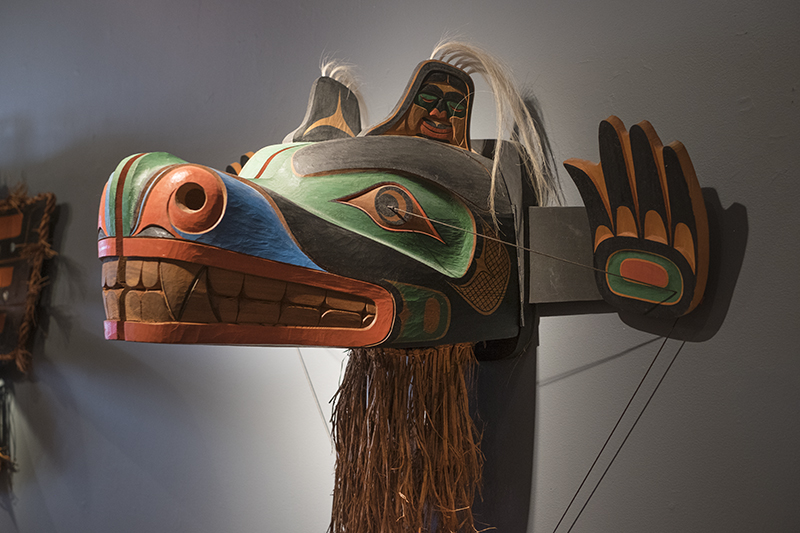 Bear Transformation Mask – 1997Red Cedar, Cedar Bark, Horsehair, Twine, Pigments
Bear Transformation Mask – 1997Red Cedar, Cedar Bark, Horsehair, Twine, Pigments- 40"h
- 49"w
- 18"d
SOLD -
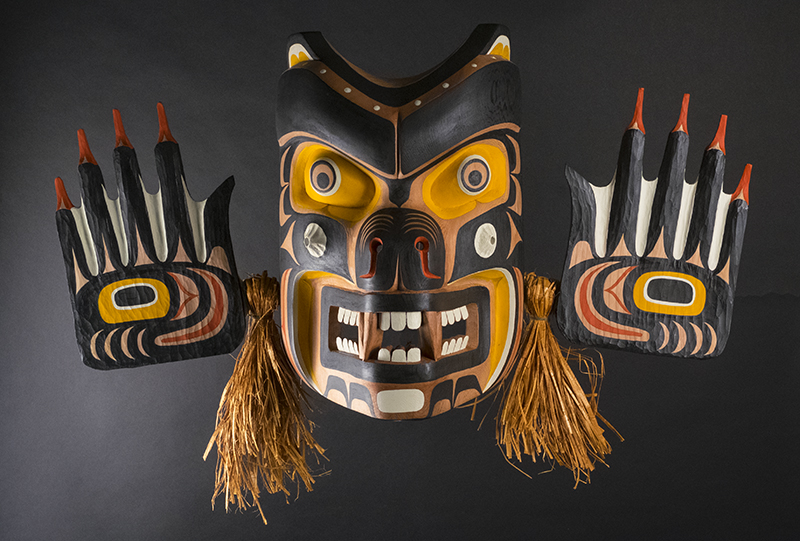 Sea Bear MaskRed Cedar, Acrylic, Cedar Bark
Sea Bear MaskRed Cedar, Acrylic, Cedar Bark- 18"h
- 30"w
- 10"d
SOLD -
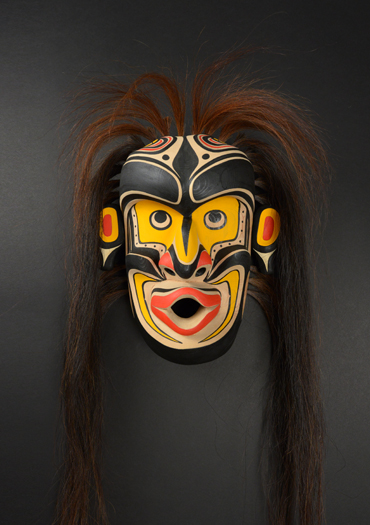 Chief’s Wild Woman MaskRed Cedar, Yellow Cedar, Horse Hair, Acrylic
Chief’s Wild Woman MaskRed Cedar, Yellow Cedar, Horse Hair, Acrylic- 39"h
- 14"w
- 4.5"d
SOLD -
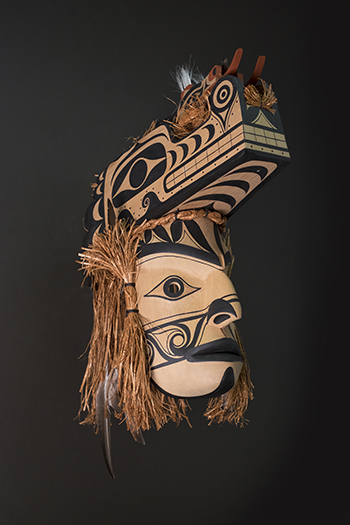 Serpent Dancer MaskRed Cedar, Cedar Bark, Horse Hair, Decorative Feathers, Custom Wall Bracket
Serpent Dancer MaskRed Cedar, Cedar Bark, Horse Hair, Decorative Feathers, Custom Wall Bracket- 27"h
- 10"w
- 22"d
SOLD -
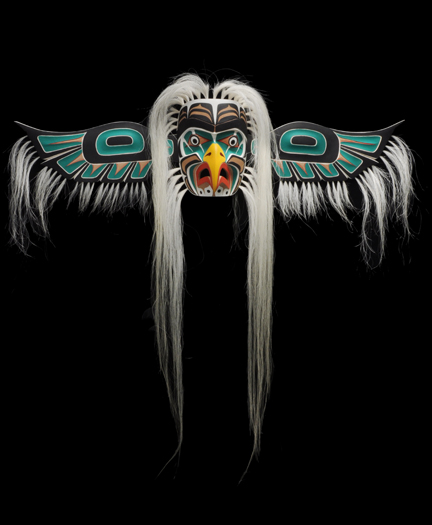 Bald Eagle MaskRed Cedar, Acrylic, Horse Hair
Bald Eagle MaskRed Cedar, Acrylic, Horse Hair- 36"h
- 40"w
- 6"d
SOLD -
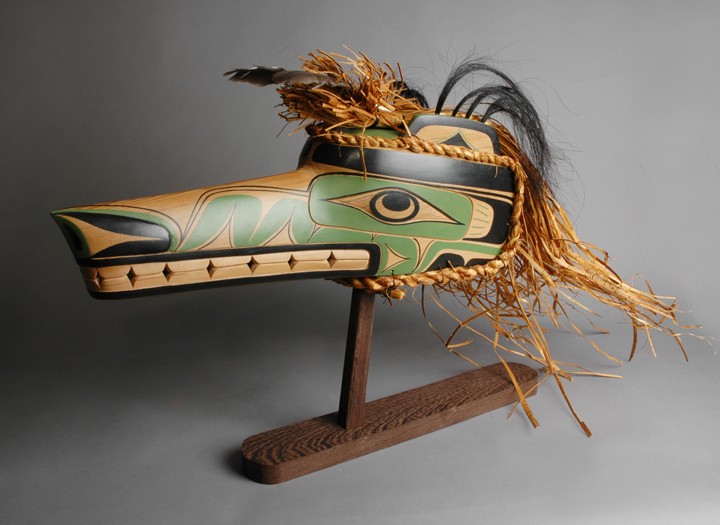 Wolf HeaddressRed Cedar, Acrylic, Cedar Bark, Horse Hair
Wolf HeaddressRed Cedar, Acrylic, Cedar Bark, Horse Hair- 18"h
- 7"w
- 10"d
SOLD -
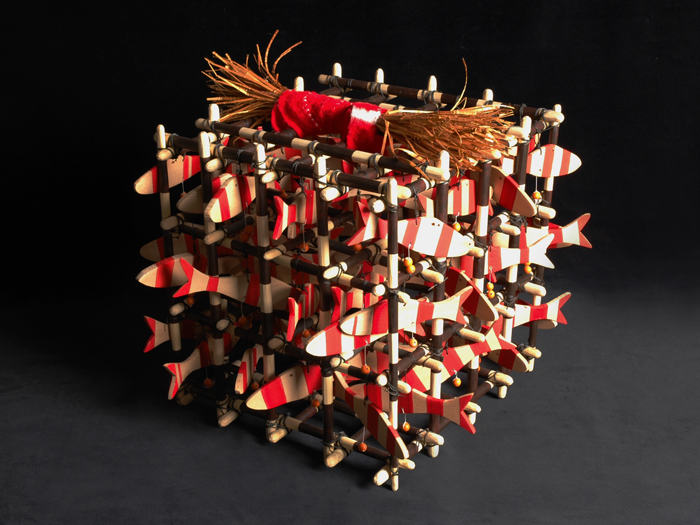 Salmon RattleRed Cedar, Cedar Bark, Acrylic, Hudson Bay Style Blanket
Salmon RattleRed Cedar, Cedar Bark, Acrylic, Hudson Bay Style Blanket- 14"h
- 14"w
- 14"d
SOLD
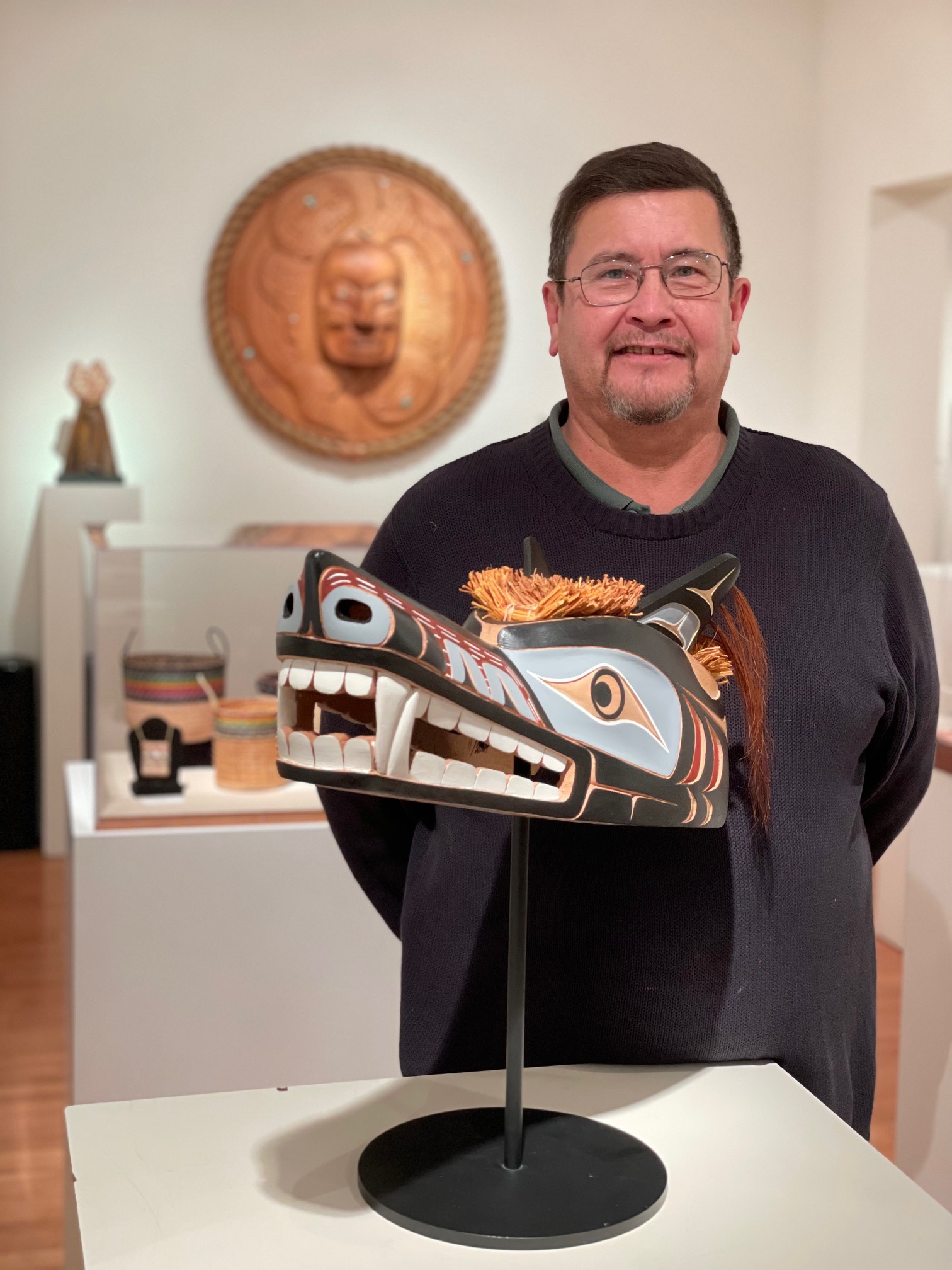 Tom Patterson was born June 13, 1962, in Victoria, British Columbia. He moved with his family to the West Coast of Vancouver Island early in his life. Tom credits his parents for his interest in his heritage as they passed along the traditions and culture of the Nuu-chah-nulth peoples to him at a young age.
Tom Patterson was born June 13, 1962, in Victoria, British Columbia. He moved with his family to the West Coast of Vancouver Island early in his life. Tom credits his parents for his interest in his heritage as they passed along the traditions and culture of the Nuu-chah-nulth peoples to him at a young age.
He first was inspired to carve in 1977 when he took an eight-week carving course at the Arts of the Raven Gallery and studied under Tony Hunt Sr, Calvin Hunt, and John Livingston. He continued to study with the Master carvers who shared their knowledge with Tom until 1987.
Although he is of Nuu-chah-nulth descent (West Coast) he is strong in the Kwaguilth style. He also likes to study Bella Coola, Tlingit, and other Northwest Coast styles. In 1989 along with Art Thompson and Tim Paul, Tom carved a replica of a 100-year-old totem pole from Ehasahat for the Royal British Museum in Victoria. He was then asked to participate and assist Tony Hunt Jr. in a longhouse project for the Field Museum in Chicago.
Throughout his career, Tom has had the opportunity to be part of his culture and toured and danced with Art Thompson in Denver, Colorado. He has appeared as a guest carver at the prestigious Heard Museum Northwest Coast Art show and sale in Phoenix, Arizona in 2004, 2005, 2006 and has carved with Don Yeomans, Pat Amos, and Tony Hunt, Jr.
Today Tom lives in Mission, British Columbia with his wife and family. His most recent work is with the District of Mission school board carving and working on traditional pieces in the elementary school system. He has completed a 5′ Spindle Whorl and is now working on an 11′ Coast Salish House Post for Deroche Elementary. Tom’s work graces homes and corporate businesses around the world. His 35-year career has given him the opportunity to define his craft and become one of the best master carvers in North America.
Artists Statement
“As a contemporary artist, I am interested in the pieces my ancestors would have carved. I go back in time and learn the different steps they would have taken to create their artwork. Some of my work speaks to these traditional ways. When I study the old pieces I am learning the different steps the elders used. In some of my work, I adapt basic steps to my own contemporary artwork without changing the concept of the mask.” – Tom Patterson
